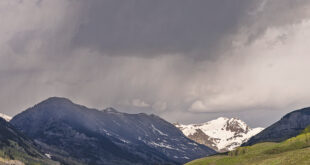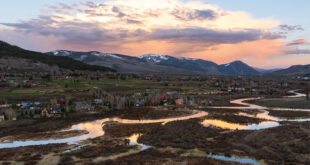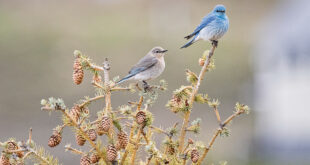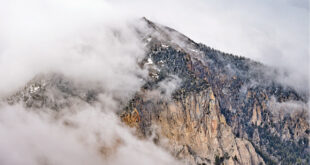Two topics of conversation seem to be dominating discussion this past week. A third should perhaps be on the list. I’ve heard the author of Norton’s Notions called a lot of names since he began opining in the paper. After all, John has not been shy about tackling issues such as Snodgrass or the air program, CBMR or leadership in the community. But boy, is he taking some heat for his last column in the July 4 issue. This week, I’ve heard him called everything from insane to bizarre to absolutely frickin’ crazy—all because he said he likes the month of February more than July. Man, am I glad I asked him to write that column.
The second topic on people’s minds is people. The numbers of people. One longtime local wise man likened the Fourth of July action to a scene in the movie World War Z where the zombies scale the giant walls of Jerusalem. He said watching downtown on the Fourth was like watching thousands and thousands of zombies move onto Elk Avenue to dodge the heat of Texas or Oklahoma. The parking lot at the CBMR Base Area is filled with different-colored license plates from across the continent.
Not to be mean, but if you own a business and aren’t making money now, you might consider another line of work. Most businesspeople I spoke with said they set new records this week. The last week of June and first week of July was off the charts. Some of the lodging properties up on the mountain apparently set records for any month of the year, including winter. And that’s at the ski area. Good luck finding a parking place on Elk…and I’m talking bike parking as well as vehicle. Many of the rental shops ran out of bikes every day over the weekend. Lines are stretching out from every coffee shop and ice cream store. An hour wait at a restaurant is considered short, and that happens if you want to eat dinner at 4:45 p.m.
The sun is shining and it’s the time to make hay. If it were this busy in the winter (when we are supposed to be), the equation would be complete. Still, remember to find an hour or two no matter how busy you are to relax and refresh on a trail or even in one of the alleys. And if the crowds are too much and are driving you crazy…understand that by the middle or end of August, this will all be just a memory.
Now for the third topic. A friend noted to me over the holiday weekend that Colorado is “shrinking.” He explained that he meant that as people read and see parts of the state going up in smoke and sweltering under 100 degree temperatures, they look for the still nice cool mountain places that aren’t in flames. Crested Butte is one of them. But for how long?
If you haven’t read Aimee Eaton’s story in last week’s edition of the Crested Butte News headlined “Under Pressure: An Overview of Forest Health in the Upper Valley,” you should.
She talked with state forester Sam Pankratz and he basically said we are set up to be in the same position as Creede or South Fork or any number of Colorado areas that have been swallowed in flames and smoke this summer and last. It’s the homes in the valleys, the businesses in the towns and the reputation of the region that feels the impact when an area starts burning. When the flames are extinguished, many times so are the pristine forest views. So, when an area is struck with fire, winter gets affected as well as summer. But, like it or not, forest fires are part of the natural eco-system and they will happen.
Between drought and fuel on the forest floor and approaching beetles, our environment could easily catch fire. But Sam says we can start to at least mitigate that fire danger. It is something to do now, not once the lightning strikes and the flames start making their way down one of our still green valleys. Number one on the list is that homeowners should make sure to create defensible spaces around their houses.
For the bigger picture, Sam suggests we as a community can start to increase forest health by promoting species and age diversity. That would entail thinning the area forests, planting trees and mimicking small-scale disturbances on the landscape via forest management.
That would take some time and some people. Just dealing with the forests around Crested Butte would be time and resource intensive. But it could put us ahead of the game and help keep our valleys safe and green.
These are actions we should consider putting in place now to prevent calamity in the future. It might entail a change in focus with local governments and the people living here. Perhaps the county commissioners, the town councils, the business community, private property owners will have to join together, put up some funding and pitch the state and U.S. Forest Service on the idea of preventive action versus fighting major fires when it is too late.
There are a lot of stakeholders that oversee our forests. But we all need to start thinking about active forest management. Ultimately, in the very long run, perhaps we move toward managing our forests through thinning the trees and using that wood for a regional biomass facility. The technology is getting cleaner and that fuel is renewable after all.
Fire is not something anyone wants to think about and managing our environment may not be cheap—but is it something we can afford to ignore? The warnings are out there. We can see the situation happening a few hundred miles away. It can happen here.
The experts say it will happen here. It’s just a matter of time. When people perceive a shrinking Colorado, shouldn’t we be thinking—and acting—about how not to be part of a shriveling high country? After all, as much as Norton might want it, we can’t count on February snow to keep the valley moist this time of year.
 The Crested Butte News Serving the Gunnison Valley since 1999
The Crested Butte News Serving the Gunnison Valley since 1999





